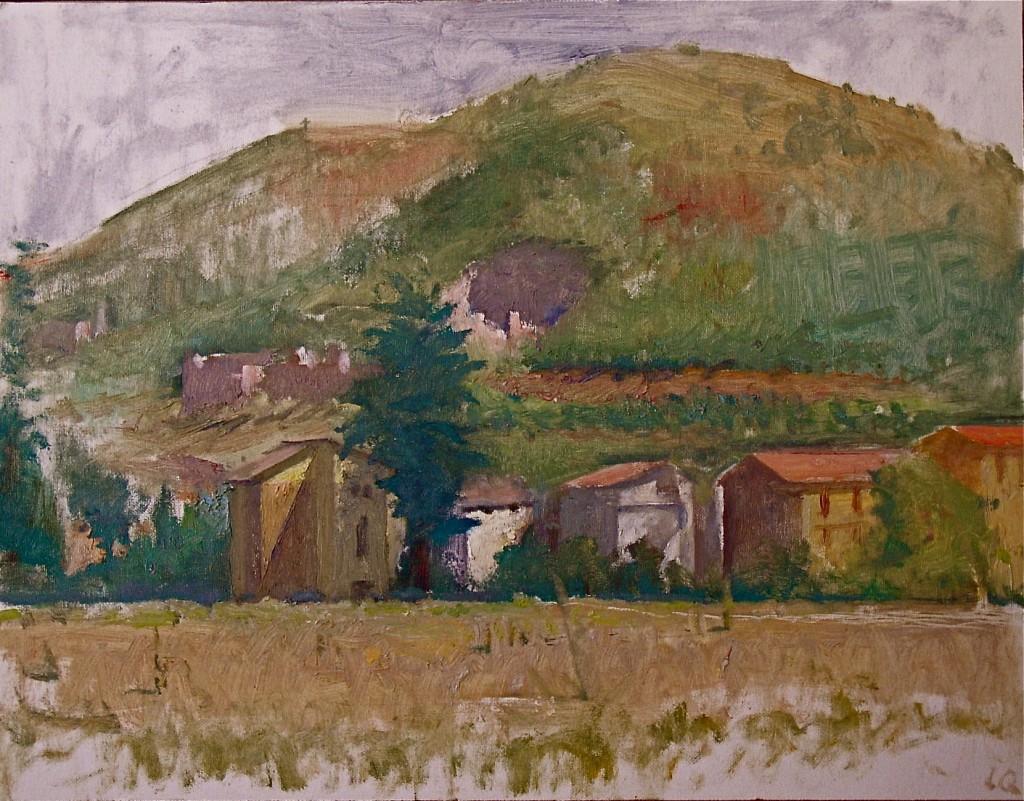Perceptual painting in Italy
Great thoughts from Fairfield Porter and Langdon Quin on how art offers a path toward particularity of experience, in many ways opposed to what technology is bringing about, from The Painting Center‘s website for an upcoming show that looks exceptional:
A long time resident of both Italy and upstate New York, Langdon Quin presents landscapes in Recent Paintings an exhibition at The Painting Center from March 31–April 25, 2015. The paintings were all created between 2010 and 2015. Each represents a synthesis of visual information derived from plein air oil studies, drawings, photographs, memory and invention. These various sources combine skillfully in the seven Italian landscapes on view here. They reveal Quin’s vision of an exhilarating pictorial world of taut and physically felt spatial tensions mediated by the luminous subtleties of color and light that are particular to each motif.
A decisive moment in Quin’s training as a graduate student at Yale in 1975 occurred on the occasion of a lengthy studio visit by the great painter and art writer Fairfield Porter. This studio visit followed Porter’s seminal public lecture at Yale based on his essay “Technology and Artistic Perception” published in the American Scholar in 1973. In that talk, Porter articulated what he believed to be the “province of painting” in the late 20th century. Quin recalls vividly that Porter likened painting to poetry in urging the consideration of “particularization of experience” as the essential expressive mission of both forms. Porter argued that this particularization stands in opposition to the generalization of experience that technology pushes upon modern culture. Quin’s internalization of Porter’s prescient directive has informed his feelings about picture making ever since. The palpable rapture he feels in front of observable phenomena in nature and the process of its transformation into painting are foremost among the forces that have always guided his artistic efforts.
In addition to Italian Quattrocento influences and French pre-Impressionist models such as Corot and Courbet, Quin has long admired a range of modernist masters as diverse as Bonnard and Balthus, Matisse and Morandi, or the Americans, Louis Eilshemius and Albert York.

Comments are currently closed.